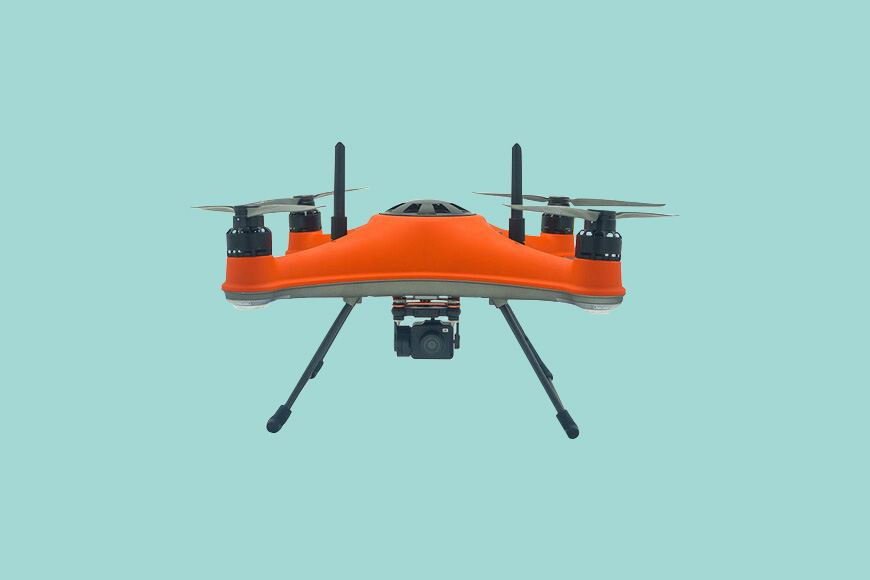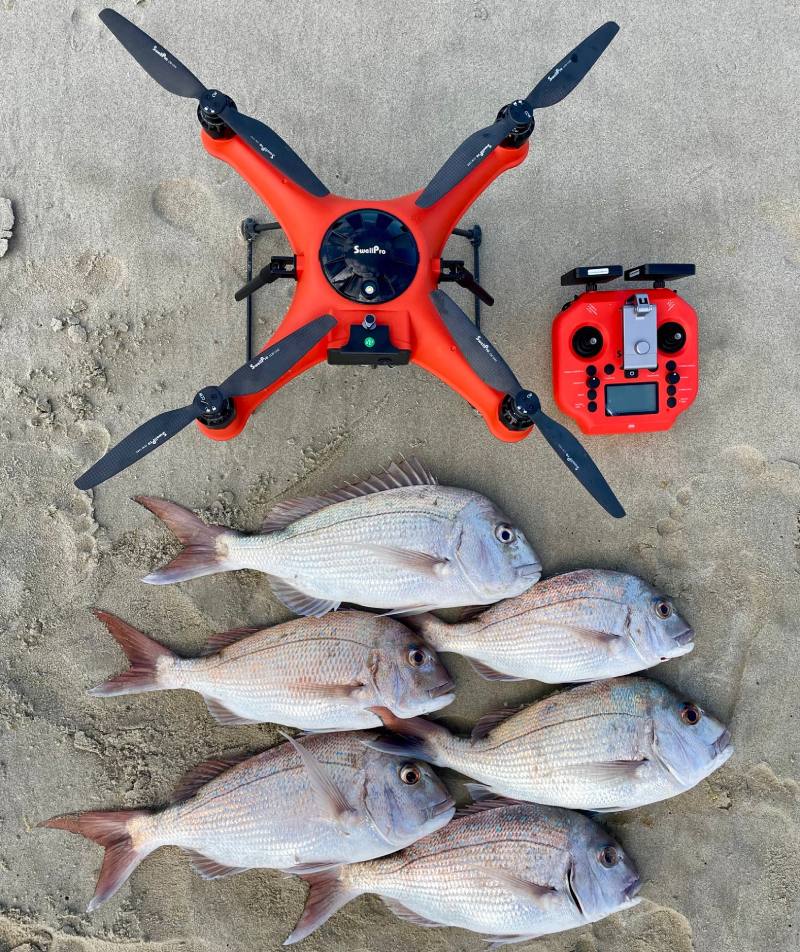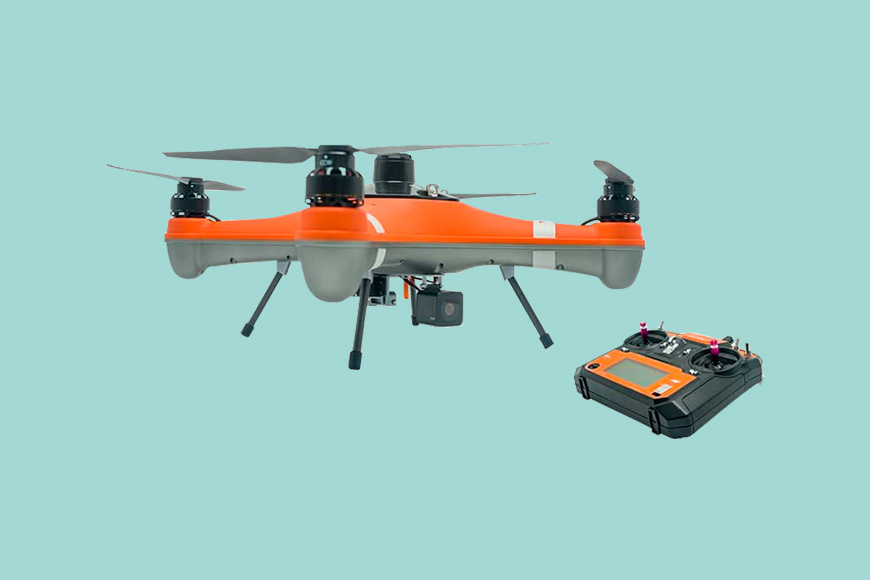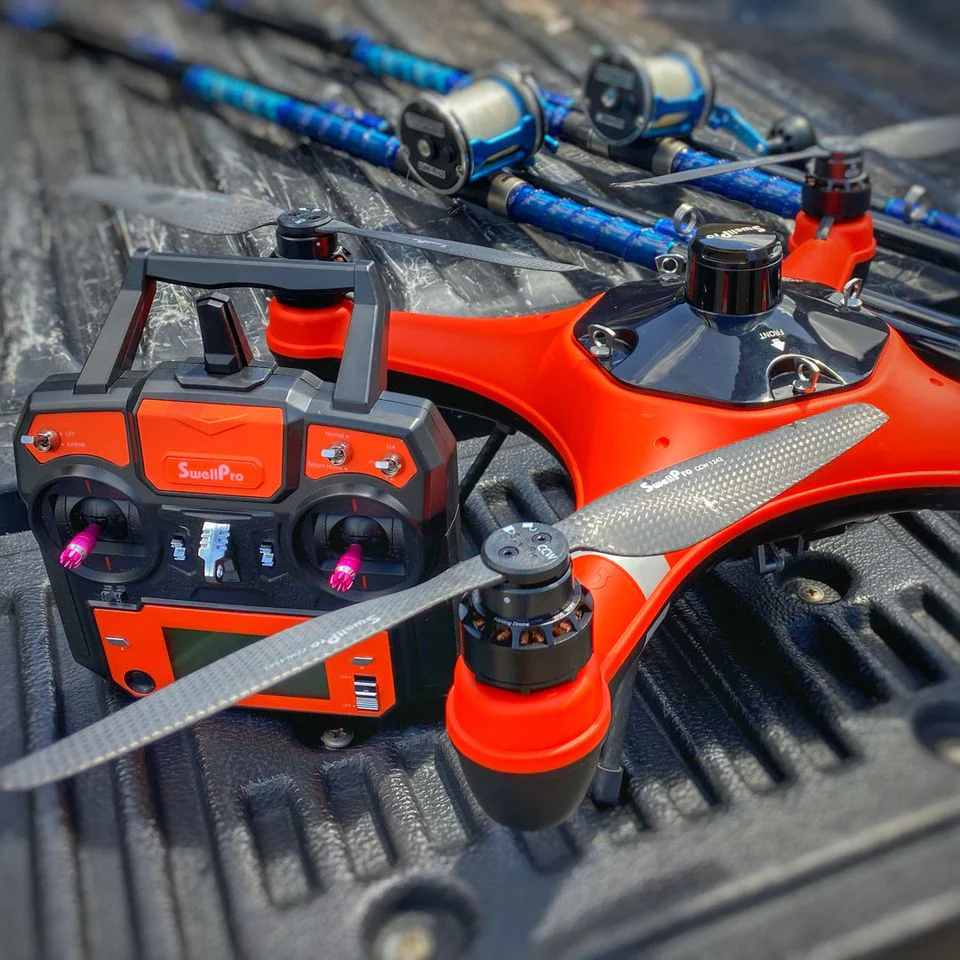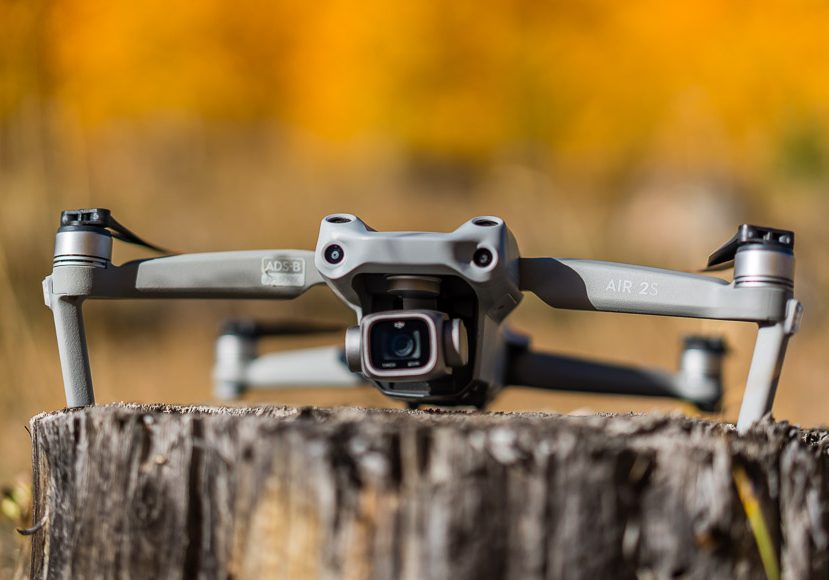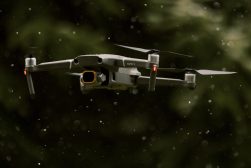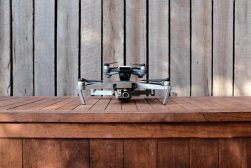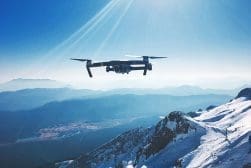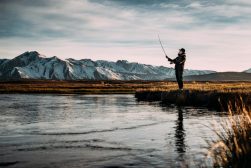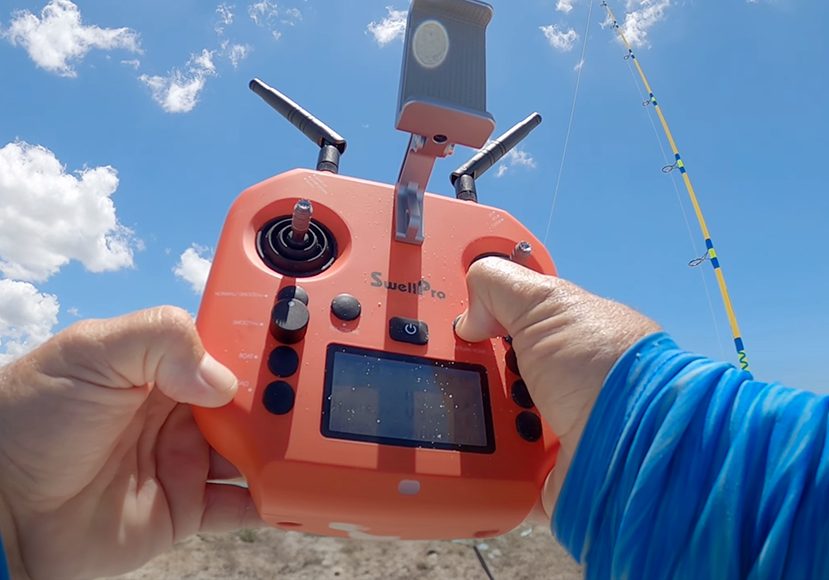
Best Fishing Drones in 2024 (Cast Your Bait Further)
Fishing drones are a great way to scout and cast bait. In this article, you will find out the best fishing drones of 2024 and what features to look for.
This guide will help you find the best fishing drones currently on the market.
Drone fishing is becoming more and more popular and completely altering the sport of angling.
Using a quadcopter can help you fish further out and in remote areas that were previously inaccessible.

Ultimate fishing drone with strong transmission, saltwater resistance, 2 kg (4 lbs) bait lift capacity and strong wind resistance to cast your bait further.
As this is a specific environment, you might think that you would need a specific fishing drone to elevate your angling experience.
But, while it’s true that there are quite a few drones that are tailor-made for drone fishing, it’s also possible to use standard drones and accessorise them.
You can even try to increase your catch with an underwater fishing camera or go all out with a waterproof drone for choppy open-sea fishing.
What Is the Best Fishing Drone in 2024?
SwellPro SplashDrone 4 (Best Waterproof Drone for Fishing with Bait Release)
- Night vision and thermal cameras
- Drone waterproof to IP67, controller to IP66
- Powerflip feature
- Payload system up to 2kg (4 lbs)
- Expensive
The Swellpro SplashDrone 4 is a rugged professional-grade fishing drone with a large, strong frame that allows it to be used in windy conditions while still producing high-quality, shake-free 4K video.
Its body and remote controller are both waterproof to IP67 and IP66, respectively. And both of them can float, which is ideal if you’re surf fishing or offshore boat fishing.
(With saltwater fishing, even if you’re using a waterproof drone, we highly recommend rinsing the drone in clean water afterwards to prevent corrosion.)
The SwellPro can both land and take off from the water, and it also has a unique feature called Powerflip. If the drone gets flipped over, by a wave, for example, it can flip itself the right way up.
It can fly up to 5 kilometres away and can spend half an hour in the air at a time.
It can also carry light payloads, such as fishing lures or bait – check the video below for an example:
Despite it being packed with high-level features, it’s simple to use.
It has Auto Takeoff and can also be flown from an app, the very same app that you can use to program the drone and fly it on autopilot.
It has Waypoints, so you can set a mission for it to fly and log and record the mission. With Grid Mission Planning, you can connect up to 256 waypoints.
The drone has a Follow Me function and remote GPS tracking, which enables the Return to Pilot feature.
With that, you can set the SwellPro up to fly back to you automatically and do this even if you, the pilot, are moving on a fishing boat.
The SwellPro SplashDrone 4 also has a waterproof payload release and a one-click payload drop, which makes it a great fishing drone. It can lift up to 2kg and carry up to 25 baits.
SwellPro Fisherman Drone FD1 (Best Budget Fishing Drone)
- Simple to use drone for fishing
- Basic and FPV versions
- Lifts up to 2kg (4 lbs)
- Return Home feature
- No Powerflip
- No 4K video
This drone is basically the SwellPro SplashDrone 4 with all of the features that aren’t necessary for drone fishing taken out. That makes it cheaper, but I’ll also call it budget because you don’t have to buy accessories to make it waterproof.
The drone doesn’t shoot 4K video, but that’s okay if you’re using a drone for fishing since you don’t need high-resolution footage – only to see what you’re doing.
Like the SplashDrone 4, the Fisherman Drone FD1’s waterproof payload system can carry up to 2kg, and it’s corrosion-resistant and waterproof up to IP67.
Unfortunately, it doesn’t have Powerflip, but that’s something that’s only useful if your drone is going to be spending time in the water. If you’ll purely be dropping bait, not having Powerflip won’t bother you.
You can accessorise the drone Fisherman Drone with a remote payload release (and one that includes an adjustable camera with a real-time video feed), with Trollsafe, which automatically drops the line if the line gets hit or if there’s a reel jam, or with FPV goggles for a more immersive drone fishing experience.
On a fully charged battery, this drone for fishing can fly for 33 minutes and drop up to ten baited hooks or lures; these can each be cast up to a mile out. However, its full range is 1600 metres.
As well as being designed to be very simple to fly, it’s also extremely stable in windy conditions and can handle winds up to 38mph.
It has a Return Home feature, plus Failsafe Return. With this, should the drone experience any loss of signal or low battery, it will release whatever fishing line it is holding and return to its take-off point.
DJI Air 2S (Best Camera Drone for Fishing)
- Small and portable
- Powerful sensor
- Strong signal between drone and controller
- Good flight range
- Good fishing accessories
- Not waterproof without an accessory
The DJI Air 2S is a highly portable drone that folds up small and also comes in a compact case that also holds spare batteries, propellers, and other accessories.
It’s my pick as the best overall fishing drone due to the quality of its features and the fact that it can be easily accessorised for fishing.
It has a one-inch CMOS 20-megapixel sensor that’s normally reserved for pro cameras. This gives you high-quality footage and great low-light performance.
You can shoot 5.4K (up to 30 fps) with 10-bit footage, which is good for colour grading.
The lens is an f/2.8 fixed aperture, with a 28mm field of view, which equates to about 88 degrees, perfectly adequate for fishing.
Its predecessor had two antennas on the controller, but this one has four.

Marc Bergreen
That, along with its OcuSync 3.0 technology, means a strong signal between the drone and controller; it’s highly unlikely you’ll lose signal.
And that signal carries up to 7.5 miles (12 kilometres) away.
When combined with the a Payload Delivery Kit, the DJI Mavic Air 2 can carry and release up to 500g – more than enough to cast your chosen bait into the sea from the shore or a boat.
The drone offers intelligent focus tracking. You can select objects to track, a point of interest, or use active tracking, or spotlight mode. Also, you can pre-program a flight by setting up to five waypoints.
It has a variety of sensors, front, back, top, and bottom (although none on the side), so it’s good for obstacle avoidance.
Another safety feature is Return To Home, which you can trigger manually, or the drone can do it automatically if, for example, the battery gets low.
One thing to note – if you trigger the RTH feature in a boat, you need to be back where you originally launched the drone for it to return to that place
The DJI Air 2S has good battery life too, with up to 31 minutes of flight time, plus 4 hours of remote controller battery life.
Although it’s not a tailor-made drone for fishing, and although it’s not waterproof (if only DJI would make a waterproof drone!), you can kit it out for drone fishing.
You can add a payload drop system if you need to and make it waterproof with the Wet Suit and Rescue Jacket.
Thanks to the best drone accessories, the DJI drones listed here are multi-use and excellent for any application, not just drone fishing.
DJI Phantom 4 Pro V2.0 (Best Premium Camera Drone for Surf Fishing)
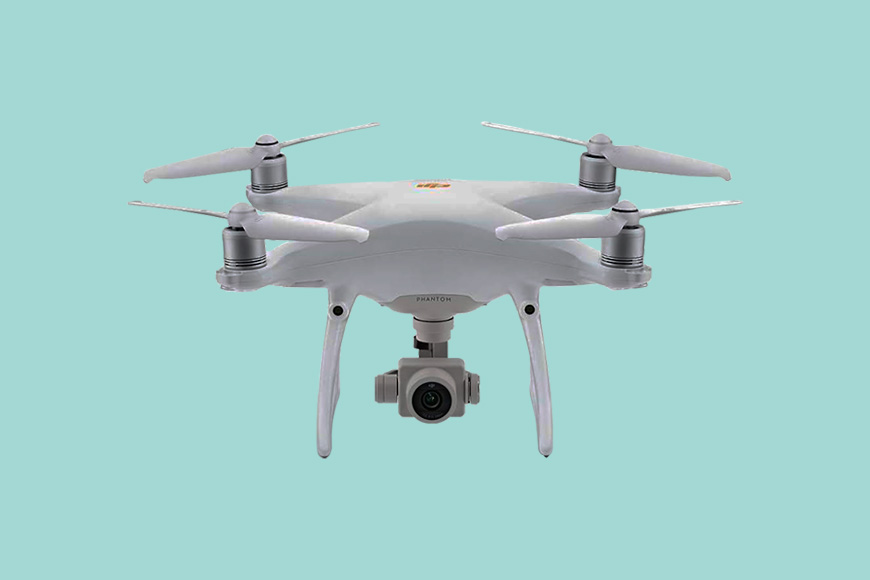
- Extremely responsive controls
- Intelligent flight modes
- Strong transmission signal
- Return Home feature
- Bulky and hard to transport
- Loud
This is an update on a classic drone, one of the most well-known and well-loved of its time, and it’s a great drone for fishing.
It offers good image quality, 20-megapixel RAW files, and full 4K video with no crop at 60 fps. Both the footage and what is transmitted to your controller are extremely high detail and resolution, clear, and with good colours.
The controller connects to the drone using OcuSync 2.0 technology, which results in an extremely strong transmission signal.
On a full charge, the Phantom 4 Pro V2 can give you 25 minutes of flight time, and it can fly up to about 8 kilometres away – not quite as far as the best long-range drones, but good enough for most surf fishing activities.
It’s very easy to fly, and its legs make it simple to take off and land, especially if you are on a moving vehicle like a boat or are flying it in windy conditions. You can easily catch hold of it rather than try to land it on something flat.
It has a host of intelligent flight modes, such as Active Track and Return Home. Plus, it also has an intelligent battery.
The DJI GO 4 app calculates how much flight time remains in the battery, and when the drone reaches the minimum distance needed for a safe journey back to the take-off point, you get a prompt, so you can fly it back with no issues.
That’s certainly peace of mind when you’re using the drone for fishing and flying it over water.
Although it is not waterproof or designed specifically for fishing, you can accessorise the drone for fishing with a wet suit, payload release, or rescue jacket.
What to Look for in a Fishing Drone
If you’re in the market for a fishing drone, there are several features and considerations to keep in mind to ensure you get the best value and performance for your needs.
Here’s a list of things to look for:
Payload Capacity
Ensure the drone can carry the weight of your bait and tackle. Some drones can carry up to 2kg, which is sufficient for most fishing needs.
Flight Time
Look for a drone with a long battery life, ideally 20 minutes or more. This will give you ample time to scout locations and drop your bait.
Range
A longer range is beneficial for fishing as it allows you to explore more areas and reach spots that are far from the shore.
Stability
The drone should be stable in windy conditions. A gimbal can help stabilize the camera, which is useful for scouting fish.
Waterproof or Water-Resistant
Since you’ll be flying over water, it’s crucial to have a drone that can withstand splashes or even a brief dunk. Some drones are designed to float, which can be a lifesaver if you have an accidental water landing.
GPS & Return to Home
A GPS feature is essential for fishing drones. It allows the drone to hover in a fixed position and return to its take-off point if the battery gets low or if it loses signal.
Camera Quality
A high-quality camera with good resolution will help you spot fish and underwater structures. Some drones even offer underwater cameras.
Live Video Feed
This allows you to see in real-time where you’re flying and where the fish are. Ensure the video feed range matches the drone’s maximum range.
Bait Release Mechanism
Some fishing drones come with a built-in bait release mechanism, while others require an aftermarket addition. This feature allows you to drop bait in precise locations.
Automatic Flight Modes
Features like “follow me,” “orbit,” and “waypoint” can be useful for various fishing scenarios.
Durability
Ensure the drone is robust and can withstand the rigours of fishing, including exposure to saltwater, which can be corrosive.
Portability
If you’re going to be travelling with your drone, consider its size and weight. Some drones are foldable, making them easier to pack and transport.
Safety Features
Look for drones with obstacle avoidance, low battery alerts, and other safety features to prevent accidents.
Are Fishing Drones Really Worth It?
Fishing drones offer innovative ways to enhance the angling experience but come with challenges and costs.
Pros of Fishing Drones:
- Extended Reach: Access hard-to-reach fishing spots.
- Scouting: Locate fish schools and underwater structures.
- Precision Bait Drop: Target specific areas accurately.
- Safety: Fish without being on rough waters.
- Novelty: Adds excitement to the fishing experience.
Cons of Fishing Drones:
- Cost: Quality drones can be pricey.
- Battery Life: Limited flight time.
- Learning Curve: Requires practice to master.
- Regulations: Local laws may restrict usage.
- Potential for Loss: Risk of drone crashes.
- Environmental Impact: Can disturb wildlife and other anglers.
Is Drone Fishing Legal?
Drone fishing legality varies by country, state, or region. While drone fishing itself might not be explicitly illegal in many places, there are regulations governing drone use that can impact the activity. Here are some general considerations:
- Drone Regulations:
- In the U.S., the Federal Aviation Administration (FAA) oversees drone regulations. You’d want to check the FAA’s official website for the latest on drone use.
- In the U.K., the Civil Aviation Authority (CAA) is the regulatory body.
- In Australia, it’s the Civil Aviation Safety Authority (CASA).
- Many other countries have their own aviation authorities that provide guidelines on drone use.
- Fishing Regulations:
- In the U.S., fishing regulations can vary by state. The respective state’s Department of Fish and Wildlife or a similar agency would be the place to check.
- Similarly, in other countries, local or national fisheries departments or ministries would be the go-to for fishing-specific regulations.
- Wildlife Disturbance:
- National parks or protected areas often have their own sets of rules. In the U.S., the National Park Service (NPS) has guidelines about drone use in national parks.
- Privacy Concerns:
- Privacy laws can vary widely. In the U.S., individual states might have specific laws or regulations about drone use and privacy.
- Licensing and Certification:
- As mentioned, the FAA in the U.S. has guidelines about when drone operators need to be certified. The same goes for the CAA in the U.K. and CASA in Australia.
- Nighttime Use:
- This typically falls under the purview of the aviation regulatory body for the country in question.
FAQs
How do you drop a fishing line from a drone?
First, you need to attach your line, bait, or lure to your fishing drone in the place that’s designed to take it.
Then you should program in the drop location or manually the drone there and release the line.
How much line do you need for drone fishing?
As drone fishing can take you out further than you normally would, you need a long line, and figuring out exactly how much line you need is essential to get the most out of your fishing experience.
You need enough for the distance you want the cast to be, plus a decent amount of extra line to help you out in any unexpected circumstances.
As such, it’s generally recommended that you go fishing with at least 700 metres of fishing line.
Can you use a DJI drone for fishing?
Yes, you can.
Any DJI drone can be used for fishing. None of them are waterproof underwater drones or specifically designed for fishing, but they can be accessorised with payload releases and wet suits to enable them for this application.
The DJI drones that are best to use for fishing are the ones in this guide, the DJI Air 2S and the Phantom 4 Pro V2.0.
Can you use a cheap drone for fishing?
Yes, you can, although it’s not recommended.
You need to make sure that your drone will have the features and durability to fly over water, get splashed, drop and retrieve bait, and transmit good-quality footage. Those qualities don’t come cheap.
Our choice in this guide is the SwellPro Fisherman FD1 Fishing which retails at just over $1000.
What is the range of a fishing drone?
Fishing drones are generally long-range waterproof or underwater drones. They need to be as their purpose is to help you fish in places you wouldn’t ordinarily be able to get to.
The DJI Phantom 4 Pro V2.0 can fly up to 8 kilometres away. More than enough for fishing. Who fishes with an 8-kilometre-long line?!
What drone drops bait for fishing?
All of the drones in this guide can drop fishing bait.
The two DJI drones can be accessorised with payload releases, and the two SwellPro drones have payload release built in.
How do you rig a drone for fishing?
The drones in this guide either come with payload release built-in or can be accessorised with this.
With these, you attach your line and bait to the payload release mechanism and once the drone is hovering at the spot you’ve determined you want to fish at, you can tell the drone to let it go.
Which SwellPro drone is best for fishing?
Either of the ones mentioned in this guide are great for fishing – the SwellPro SplashDrone 4 or the SwellPro Fisherman Drone FD1.
Both of them are waterproof, portable, durable, stable in wind, have the correct safety features, and were designed with fishing in mind, with payload releases built-in.
Screenshot from Rad Reel Fishing: YouTube

Ultimate fishing drone with strong transmission, saltwater resistance, 2 kg (4 lbs) bait lift capacity and strong wind resistance to cast your bait further.





